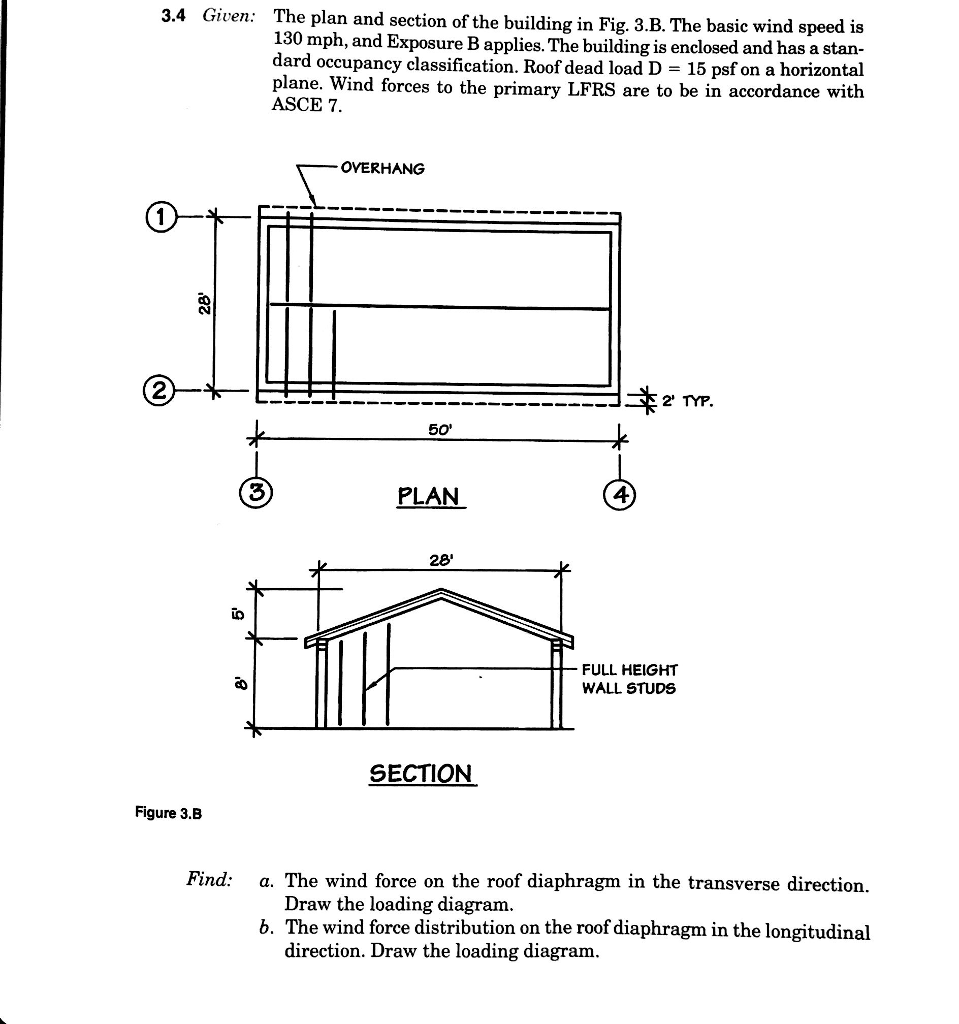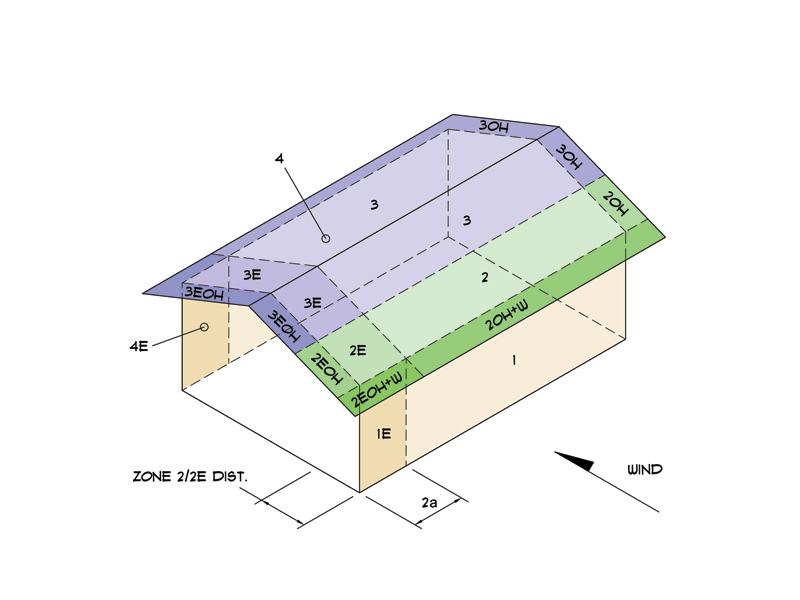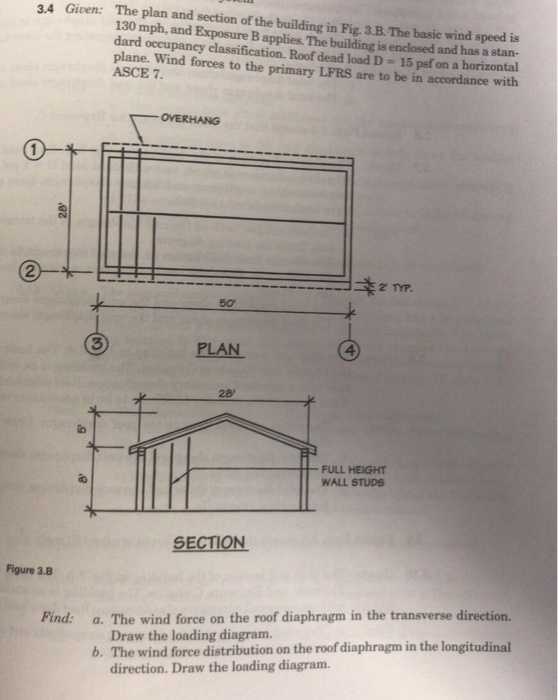For longitudinal load case the roof pressure coefficient gcpf when negative in zone 2 or 2e shall be applied in zone 2 2e for a distance from the edge of the roof equal to 0 5 times the horizontal dimension of the building parallel to the direction of the mwfrs being designed or 2 5 he at the windward wall whichever is less.
Wind force on roof in longitudinal direction.
In the longitudinal direction when the force acts on the gable ends of the building the first component to interact with the load is the cladding materials sheeting.
For basic wind speed map fig.
A find the unit shear in the shear segment along line 1 at the roof and 2nd floor level.
Wind tunnel applications for buildings 5.
The critical lateral wind force in the longitudinal direction is given.
The description of each exposure classification is detailed in section 26 7 2 and 26 7 3 of asce 7 10.
And kopp and traczuk 2007.
Depending on the wind direction selected the exposure of the structure shall be determined from the upwind 45 sector.
Wind loads for signs other structures roof top structures equipment other special conditions 4.
The basic design wind speed v mph corresponds to a 3 second gust speed at 33 above ground in exposure category c and is associated with an annual probability of 0 02 of being equalled or exceeded 50 year mean recurrence interval.
In the longitudinal direction when the force acts on the gable ends of the building the first component to interact with the load is the cladding materials sheeting.
Through which the force.
He measured mean and peak pressures spatially averaged over various roof areas.
B using the perforated method.
Studs are spaced 16 in.
6 1 see wind map webpage.
Wood structural panel sheathing is designed to function as a shearwall.
The code wind load provisions for roof mounted equipment in asce7 10 2010 are primarily based on wind loads obtained from model scale wind tunnel measurements by hosoya et al 2001.
So the building is fine in the lateral direction.
The study by kopp and traczuk 2007 provides the basis for the lateral and uplift wind force coefficients used in asce7 10 2010.
Roof shape and slope are both important parameters for the safety of a structure especially when facing wind loads.
Many studies on roofed structures have been performed in the past.
How longitudinal force gets transferred through the system.
Components cladding wind load provisions roofs walls 3.
The present study demonstrates the pressure variations due to wind load on the pyramidal roof of a square plan low rise building with 15 wall openings through cfd computational fluid dynamics simulation.
The exposure to be adopted should be the one that will yield the highest wind load from the said direction.








